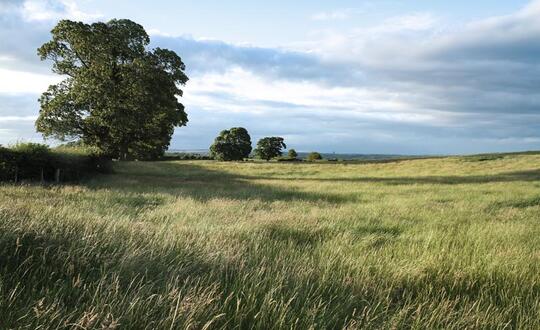
It's all change for the UK agricultural sector, following the post-Brexit removal of valuable grants and subsidies upon which many farming businesses relied.
There is a new focus on environmentally beneficial uses of land, with government plans to offer financial incentives for schemes including re-wilding, carbon sequestration, restoration of peatlands, and the protection of wildlife habitats, rivers and streams.
Many farms will grasp this opportunity to boost their finances. But farmers will be well advised to think about the broader effects of changing the ways in which their land is used. Land that has traditionally benefited from 100% agricultural property relief (APR) from inheritance tax (IHT) may lose that relief as a consequence of the change of use. The worst case scenario is that the full value of that land is subject to 40% tax on the death of the landowner. If the land is held in trust, the trustees may go from managing inheritance tax free assets to facing inheritance tax bills every ten years with resulting cashflow issues.
To qualify for APR the property in question must be both (a) agricultural in nature, and (b) occupied primarily for agricultural purposes. There is no statutory definition of 'agricultural', which may be good news as this could be extended to include environmental purposes without requiring legislative change.
While the government are proposing what they (but not all of their critics) describe as 'radical plans' to change the use of farmland to achieve environmental benefits, they appear not to have thought through the longer term consequences for farming families if the inheritance tax rules are not updated to bring them into line with this new environmentally friendly policy.
It is to be hoped that the government will provide express guidance on whether such environmental land uses will be considered 'agricultural' for the purposes of inheritance tax. There is a suggestion that the government will only take action if there is evidence that farmers are failing to take up environmental schemes due to the IHT uncertainty. This approach should be resisted. Farmers and their advisers need clarity as to whether land put to environmental use will be good for the farm's long term finances as well as for short term cashflow and for the planet.
It would not be unreasonable for the government to include environmentally friendly uses of land within the meaning of 'agricultural purposes'. The rationale for APR is that land put to agricultural use is necessary for the public good and should be allowed to remain intact. APR removes the inheritance tax liability that would otherwise result in forced sales of farmland to generate cash to pay the tax. It does not seem a big stretch to say that land used for schemes to protect and restore the environment should benefit from similar protection.
A distinction could be drawn between land which is actively managed to achieve environmental benefits, and re-wilded land which by its nature precludes active use of the land by the farmer. It is easier to see how the former could satisfy the existing requirement for the land to be used for agricultural purposes. However, if the government wishes to encourage the full range of environmental land uses then it would produce arbitrary results if some of those uses qualify for APR while others do not.
If land used for environmental purposes does not qualify for APR, there will also be a knock-on effect for farmhouses. A farmhouse can qualify for APR and avoid being subject to IHT if it is proportionate to the agricultural land being farmed. If significant amounts of that land are given over to environmental purposes, APR could be lost not only for that land but also for the farmhouse, if it is now disproportionately large for the remaining agricultural land.
Where farmland has not qualified for APR, its non-agricultural value has often benefited from business property relief (BPR). This has worked well for agricultural land with value in excess of its agricultural value, of which a common example is development value. Similar issues will arise as to the availability of BPR for land newly dedicated to environmental purposes. Is that land being used for trading purposes? If trading status is lost for part of the farmland, this could have significant repercussions for the availability of BPR for a landed estate as a whole which may seek to rely on its status as a trading entity when looked at in the round.
An owner of agricultural land without development potential may find the land has newly-found value, exceeding its agricultural value, due to its potential for environmental use - or even for carbon credits. Where there is such extra value there may well be IHT, and consideration will need to be given to whether that additional value can qualify for IHT relief.
Whatever the government decides, a decision must indeed be made. There must be certainty about when APR (failing which BPR) will be available and when it will not. Farming communities should not have to choose between adopting new land uses for immediate financial benefit if the long term result will be the loss of APR and BPR with no equivalent relief available for environmental uses.
_________
This article is provided for general information only and reflects the law at the date of publication. It does not constitute legal, financial, or other professional advice so should not be relied on for any purposes. You should consult a suitably qualified lawyer or other relevant professional on a specific problem or matter. Please see our terms and conditions for further details.
This article is for general information only and reflects the position at the date of publication. It does not constitute legal advice.




